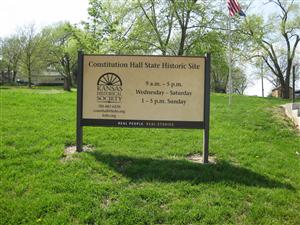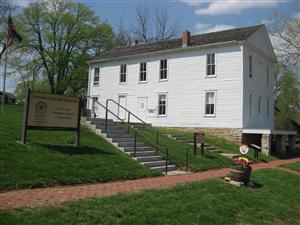Constitution Hall State Historic Site
Tour Stop
Directions: The Constitution Hall State Historic Site [ Waypoint = N39 02.723 W95 23.670 ] is located at 319 Elmore St., Lecompton, Kansas 66050
- Return to your car and head west on Woodson Avenue (County Road 1023).
- After 0.1 miles, turn right (north) onto Elmore Street.
- Constitution Hall is just ahead on your left.
Description: When Lecompton became the territorial capital of Kansas Territory, the territorial legislature would meet in Constitution Hall. The structure was built by Samuel Jones in 1856.
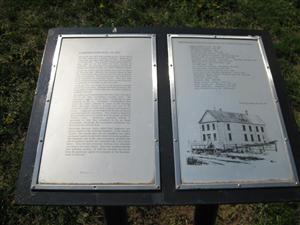
The interpretive sign has the following text:
Constitution Hall in 1857
During the year 1857, this building was one of the busiest and most important in Kansas Territory. Hundreds of settlers and speculators filed claims in the United States land office on the first floor. They sometimes fought hand-to-hand for their share of the rich lands that were opening for settlement. The government was removing the Indians from Kansas to make their lands available to whites.
Upstairs the district court periodically met to try to enforce the territorial laws. Most free-state people refused to obey these laws because they had been passed by the pro slavery territorial legislature. This resistance made law enforcement nearly impossible for territorial officials. Time after time the territorial governors called out federal troops from Fort Leavenworth or Fort Riley to maintain order.
In January 1857 the second territorial legislative assembly met on the upper floor. Although still firmly pro slavery, this group removed some of the earlier laws that their antislavery neighbors opposed.
The Lecompton Constitutional Convention met that fall in this same second-floor assembly room. The purpose of the convention was to draft a constitution to gain statehood for Kansas. Newspaper correspondents from across the country gathered to report on the meetings. Many Americans feared a national civil war if the convention could not satisfy both pro slavery and antislavery forces. Regrettably, compromise proved impossible because pro slavery men dominated the convention. They created a document that protected slavery no matter how the people of Kansas Territory voted. This was intolerable for their antislavery opponents, who refused to participate in what they considered to be an illegal government. Eventually the Lecompton Constitution was defeated at the national level. It never went into effect.
Instead, free-state forces rallied their supporters. They gained control of the territorial legislature in the October 1857 election. Two months later this new legislature was called into special session to deal with critical territorial problems. They met in the same Lecompton assembly hall that their political enemies had controlled only a few weeks before. Here the laws of Kansas Territory were reformed according to their own beliefs. That work continued during later legislative sessions. In 1858 the assembly was moved from the pro slavery capital of Lecompton to the free-state town of Lawrence.
Important Events and Uses for Constitution Hall
Built by Samuel Jones: late 1856
Addition built on back: early 1857
U.S. District Courtroom: 1857
U.S. District Land Office: 1857 - 1860
Second Territorial Assembly: January 1857
Democratic political conventions - January & July 1857
Mason Lodge No. 13 meeting room: 1857 - 1861
Lecompton Constitutional Convention: September - November 1857
Special Territorial Assembly: December 1857N.W. Perry & Co. Dry Goods Store: 1860
F.B. Hill's Hotel: 1865
Lane University dormitory: intermittent, 1865 - 1894
Boarding House: intermittent, 1865 - 1894
Lecompton City Council meeting room - 1888
Grand Army of the Republic meeting hall: 1875 - 1895
Odd Fellows, Masons, Modern Woodmen, Rebekah lodge hall: 1894 - 1986
Schoolroom: 1896 & 1920
Undertaker's Parlor: 1902
Telephone Office: 1905 - 1906
Storage room for carriages: 1909 - 1912
Public assembly hall: intermittent, 1857 - 1986
Public voting place: intermittent, 1857 - 1986
State of Kansas Historic Site: 1986 - present
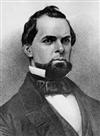 Although Kansas Territorial Governor John W. Geary was able to broker an uneasy truce in Kansas, he had few supporters, free state or pro-slavery. Early in 1857, the territorial legislature passed a bill to hold a constitutional convention in Lecompton in September 1857. Geary offered to support the bill as long as Kansas citizens could vote on its ratification. The legislature would not make this change to the bill and Geary vetoed it. The legislature overrode Geary's veto. Having been frustrated with what he saw as lack of support from the Pierce administration, Geary would submit his resignation and leave the territory in March 1857.
Although Kansas Territorial Governor John W. Geary was able to broker an uneasy truce in Kansas, he had few supporters, free state or pro-slavery. Early in 1857, the territorial legislature passed a bill to hold a constitutional convention in Lecompton in September 1857. Geary offered to support the bill as long as Kansas citizens could vote on its ratification. The legislature would not make this change to the bill and Geary vetoed it. The legislature overrode Geary's veto. Having been frustrated with what he saw as lack of support from the Pierce administration, Geary would submit his resignation and leave the territory in March 1857. 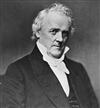 The new President, James Buchanan, appointed Robert J. Walker as the new territorial Governor. Initially, Walker did not want the position, but after accepting would write the following about the slavery question in Kansas:
The new President, James Buchanan, appointed Robert J. Walker as the new territorial Governor. Initially, Walker did not want the position, but after accepting would write the following about the slavery question in Kansas:
“The slavery question in Kansas, is not so unsolvable...It is reduced to the simple issue, of slave or free state, and must be decided by a full and fair vote of a majority of the people in Kansas. The same question has thus been decided peacefully in every other state, and why not in Kansas?”
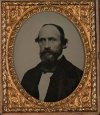 Walker finally arrived in Kansas by late May 1857. The election of delegates to the constitutional convention was to be overseen by Frederick P. Stanton, the new territorial secretary appointed by Walker. Stanton based his voter registrations on a census conducted by the authority of the Lecompton Territorial Legislature. The legitimacy of the census had been disputed by free state supporters because it greatly favored the pro-slavery advocates. Thousands of free state men were left off the voter registry for one reason or another. Charles Robinson argued with Stanton to hold a new census, but Stanton refused. The free state supporters decided to boycott the election. The election was peacefully conducted, but only about 10% of the voting age citizens actually voted.
Walker finally arrived in Kansas by late May 1857. The election of delegates to the constitutional convention was to be overseen by Frederick P. Stanton, the new territorial secretary appointed by Walker. Stanton based his voter registrations on a census conducted by the authority of the Lecompton Territorial Legislature. The legitimacy of the census had been disputed by free state supporters because it greatly favored the pro-slavery advocates. Thousands of free state men were left off the voter registry for one reason or another. Charles Robinson argued with Stanton to hold a new census, but Stanton refused. The free state supporters decided to boycott the election. The election was peacefully conducted, but only about 10% of the voting age citizens actually voted.
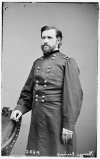 President Buchanan supported the Lecompton Constitutional Convention thinking it would solve his Kansas problem once and for all. Free state supporters began to realize that the Topeka Constitution was a lost cause. They began to realize that they would have to defeat whatever constitution came out of Lecompton when it was voted on in October 1857. Recent migrants, such as Thomas Ewing, Jr., began to argue for abandoning the Topeka Constitution and for participating in the October legislative elections. There was a change happening in the free state movement as they prepared for October.
President Buchanan supported the Lecompton Constitutional Convention thinking it would solve his Kansas problem once and for all. Free state supporters began to realize that the Topeka Constitution was a lost cause. They began to realize that they would have to defeat whatever constitution came out of Lecompton when it was voted on in October 1857. Recent migrants, such as Thomas Ewing, Jr., began to argue for abandoning the Topeka Constitution and for participating in the October legislative elections. There was a change happening in the free state movement as they prepared for October.
But pro-slavery supporters pressured Territorial Governor Walker to enforce the law against the free state legislature in Topeka. Once again, Charles Robinson was arrested for usurping office. This time there was a trial, but Robinson was acquitted on August 20, 1857.
The delegates to the Lecompton Convention were all pro-slavery men. Now that the free state movement was planning to participate in the October elections, many of the Lecompton Convention delegates were arguing against allowing Kansas citizens a chance to vote in a referendum about the constitution that would come out of the Lecompton Convention. They favored sending it directly to the US Congress and having them decide to admit Kansas as a state. The convention delegates voted to adjourn the convention until after the legislative elections being held on October 5th.
The Kansas Territory held legislative elections on October 5, 1857 during which both free state and pro-slavery supporters participated. Although the election was relatively peaceful, there were some obvious voting irregularities. Governor Walker moved quickly to throw out the fraudulent votes. Walker's actions resulted in majorities for the free state party in both houses of the legislature. Free state supporters now called for a dissolution of the Lecompton Convention because it did not represent the wishes of the citizens of Kansas.
When the convention reconvened following the legislative elections, the delegates voted to send the constitution directly to the US Congress bypassing a ratification vote by Kansas voters. But the president of the convention, John Calhoun, brokered a compromise. A vote to ratify would be held in Kansas on December 21st, but the vote would have no bearing on slaves currently in the territory, but only on the future importation of additional slaves. President Buchanan would come out in favor of this compromise, but his man in Kansas, Governor Walker, was against it and left for Washington to argue his case.
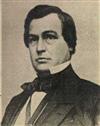 On the authority of Acting Governor Stanton, the newly elected territorial legislature went into session on December 7, 1857. This legislature voted to establish January 4, 1858 as the date for the ratification vote. And the vote would be to accept of reject the entire proposed constitution, not just a part of it. The legislature also passed a bill requesting that the US Congress immediately admit Kansas as a state under the Topeka Constitution. When news of the legislature's actions reached Washington, the Buchanan administration relieved Stanton of his duties. Buchanan named James W. Denver the new Acting Governor of Kansas Territory. Walker was unable to convince his old friend, President Buchanan, to oppose the Lecompton Constitution and resigned as governor.
On the authority of Acting Governor Stanton, the newly elected territorial legislature went into session on December 7, 1857. This legislature voted to establish January 4, 1858 as the date for the ratification vote. And the vote would be to accept of reject the entire proposed constitution, not just a part of it. The legislature also passed a bill requesting that the US Congress immediately admit Kansas as a state under the Topeka Constitution. When news of the legislature's actions reached Washington, the Buchanan administration relieved Stanton of his duties. Buchanan named James W. Denver the new Acting Governor of Kansas Territory. Walker was unable to convince his old friend, President Buchanan, to oppose the Lecompton Constitution and resigned as governor.
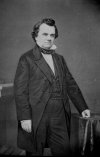 Illinois Senator Stephen Douglas came out against the Lecompton Constitution because he did not feel it represented the will of the people of Kansas. He argued in favor of rejecting both the Topeka and Lecompton constitutions. He thought Kansas should hold yet another constitutional convention.
Illinois Senator Stephen Douglas came out against the Lecompton Constitution because he did not feel it represented the will of the people of Kansas. He argued in favor of rejecting both the Topeka and Lecompton constitutions. He thought Kansas should hold yet another constitutional convention.
Kansas held the ratification vote on December 21st. Kansans could vote for or against the slavery provision in the constitution, but could not reject the entire document. Free state supporters boycotted the election and it was overwhelmingly ratified with the slavery provision intact. Once against there was widespread voter fraud.
Kansas next held elections on January 4th. In these elections they were voting for state wide offices under the Lecompton Constitution and on the ratification or rejection of the Lecompton Constitution. The constitution was overwhelmingly rejected. On January 7th, the legitimately elected legislature dominated by the free state party went into session in Lawrence, Kansas.
In arguing for the Lecompton Constitution, President Buchanan declared his opposition to the free state movement in Kansas. Buchanan felt their actions in Kansas were illegal and approached treason. He felt the December 21st vote met the intent of popular sovereignty inherent in the Kansas Nebraska Act of 1854. Many others in Congress disagreed because of the rejection of the constitution in the January 4th voting. Illinois Senator Douglas continued to argue against the Lecompton Constitution because it went against the popular vote that occurred in January. But the Senate would pass a bill that would admit Kansas as a state under the Lecompton Constitution. But the bill would have an even harder time in the House of Representatives.
Meanwhile, back in Kansas, the territorial legislature passed a bill to hold another constitutional convention. Territorial Governor Denver vetoed the bill, but the legislature overrode the veto. In March of 1858, the convention began in Minneola but soon moved to Leavenworth, Kansas. The resulting constitution included provisions to allow fee blacks to participate in elections. The Leavenworth Constitution was taken to Washington by convention delegate C. A. Woodsworth, who submitted it to the US Senate.
But the House had worked through a compromise bill that would resubmit the Lecompton Constitution to a popular vote in Kansas. If approved by Kansas voters, the constitution would make slavery legal in the state. If rejected, Kansas would not be able to reapply for admission as a state until its population exceeded 93,000. Therefore, a vote against the Lecompton Constitution would likely delay Kansas admission for many years. Both the House and Senate would pass this compromise bill on April 30, 1858. Kansas voted on August 2nd and overwhelmingly rejected it 11,300 to 1,788.
It was now clear that Kansas had no chance whatsoever of becoming a slave state. The free staters had control of the territorial legislature and the Lecompton Constitution had been soundly defeated.
Back: The Battle of Fort Titus
Next: The Battle of Hickory Point

